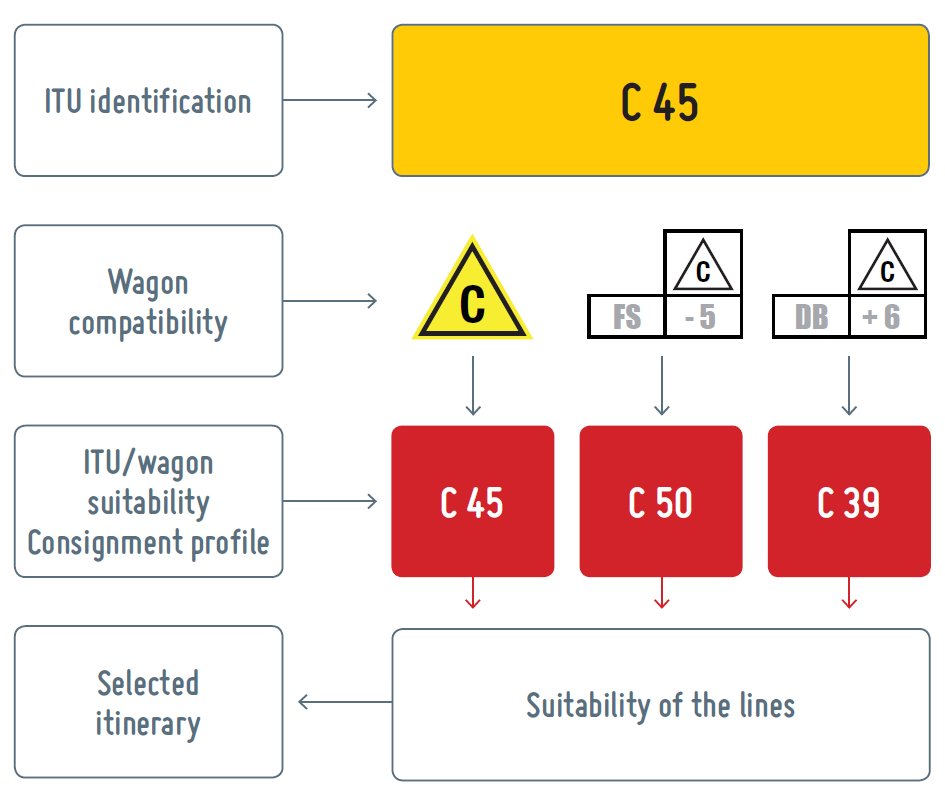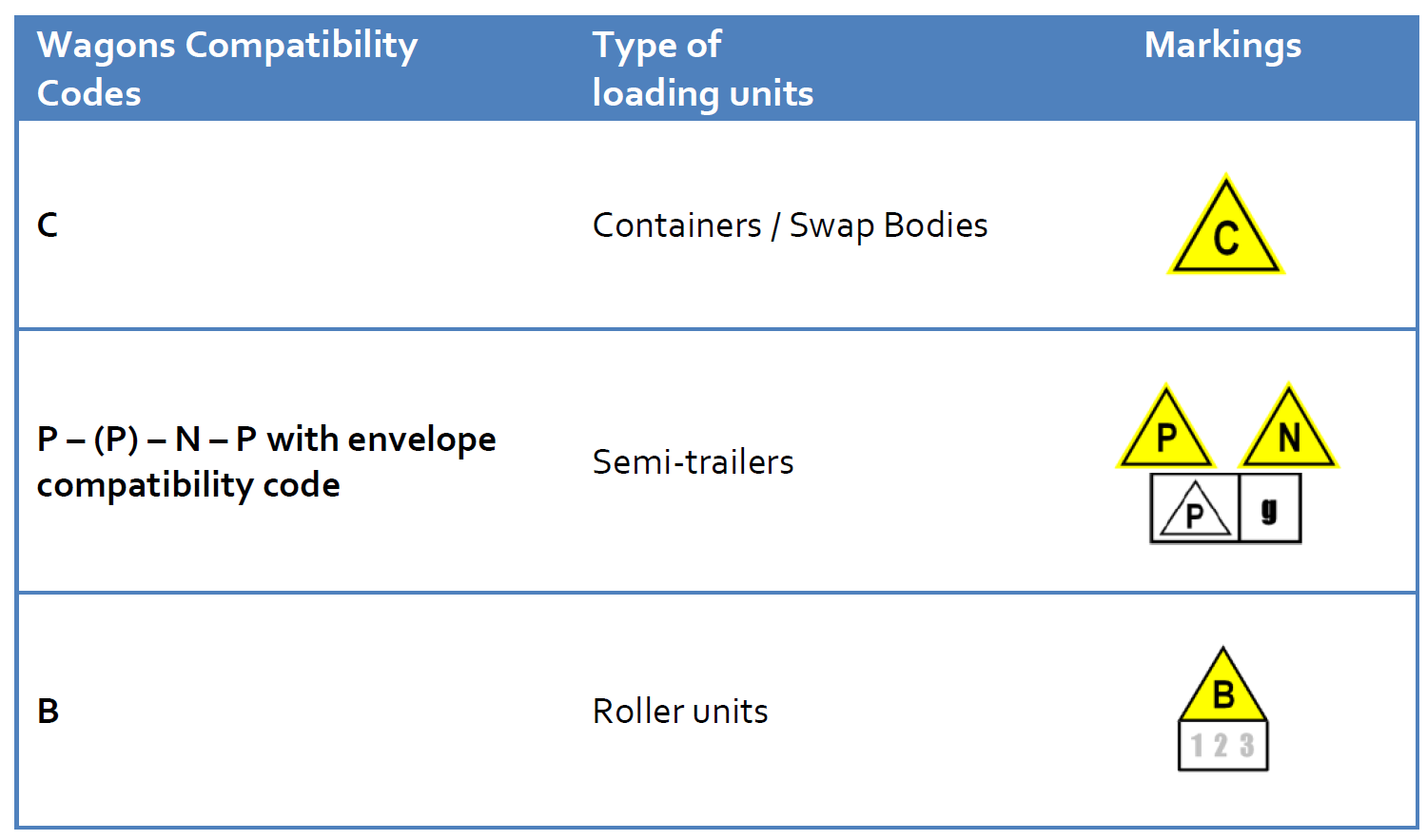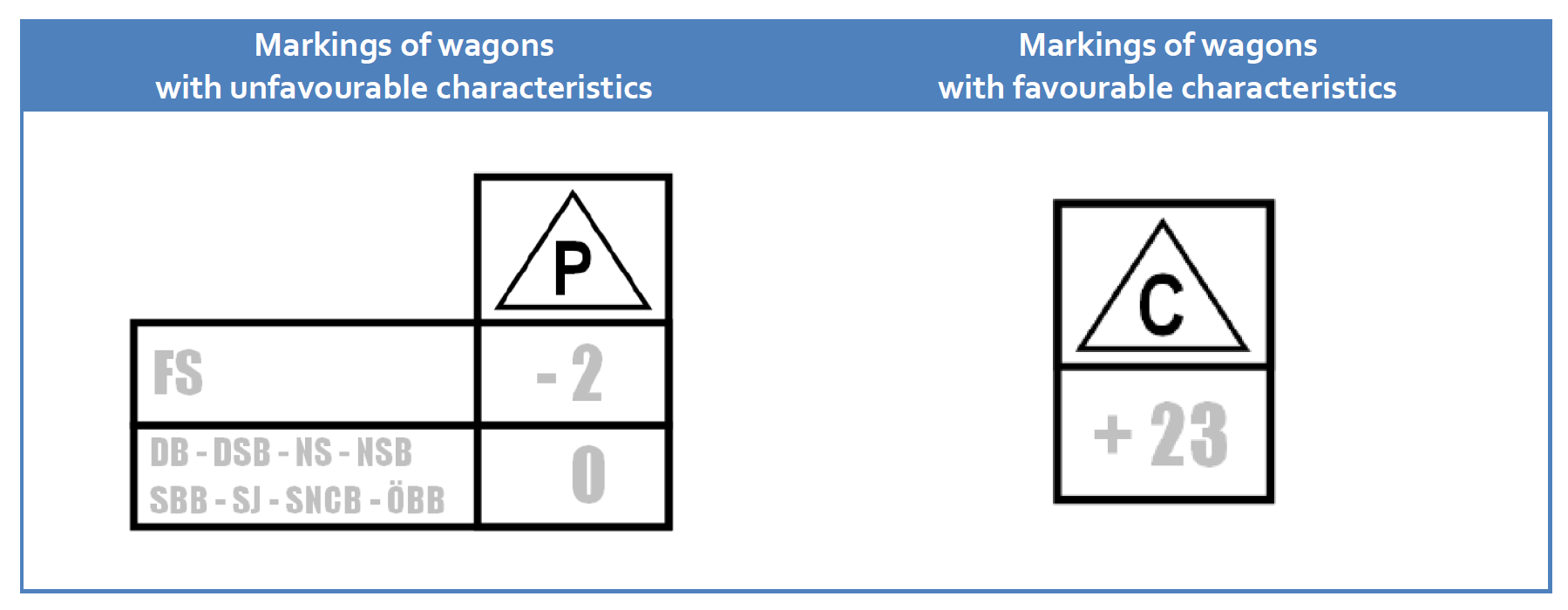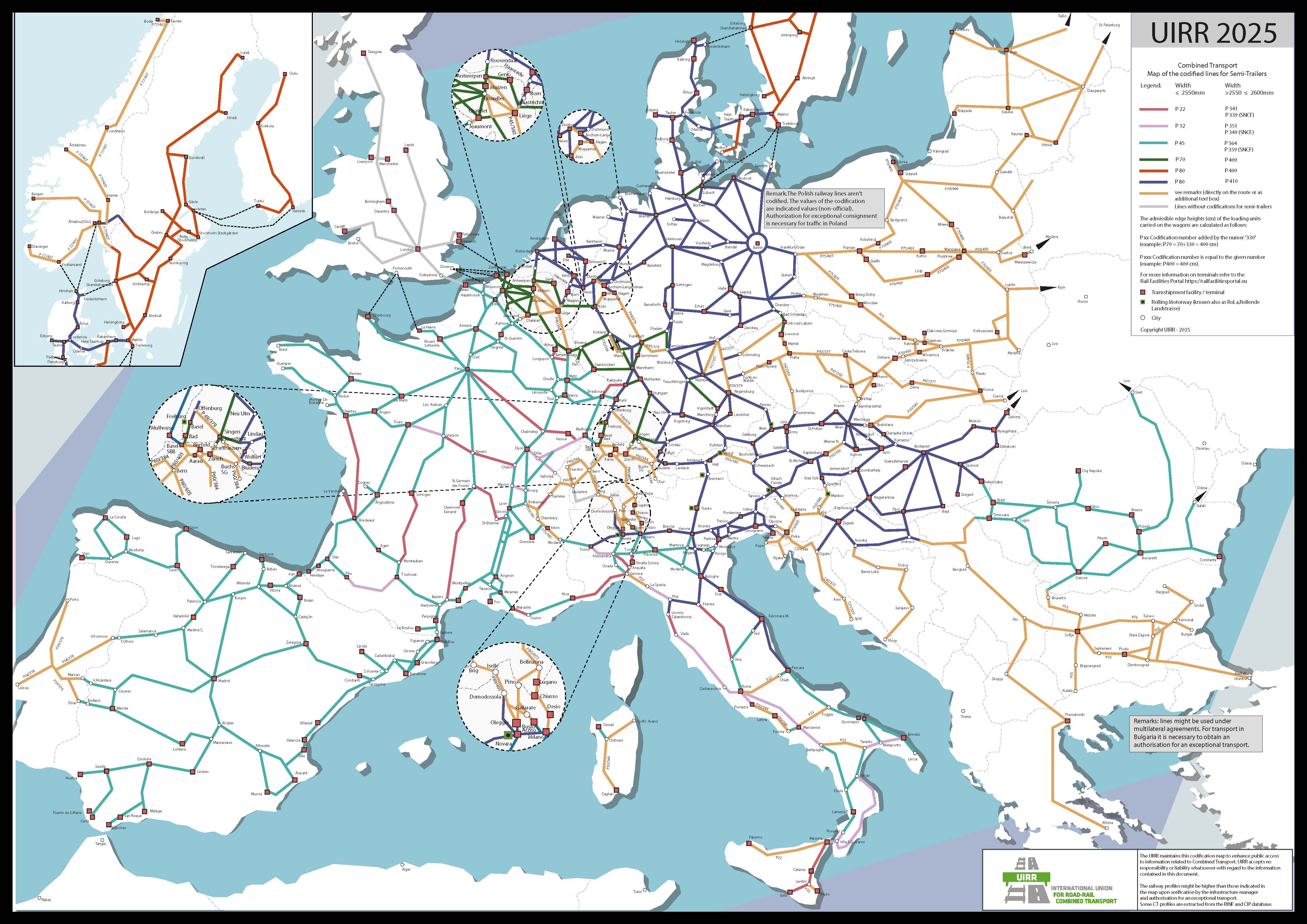Combined Transport deals with the conveyance of ILUs by road, rail, inland waterways, and short sea shipping. The dimensions of most ILUs (i.e., semi-trailers, swap bodies, and roller units) are optimized for road transport and, when they are forwarded on wagons, in a relevant number of cases, their upper sections may exceed the standard loading gauge in terms of height in several European Member States. The most common solution in this case is to use and apply the procedures for exceptional consignments according to UIC Leaflet 502-1. The nature of this procedure is cumbersome as it obliges the railway undertakings to obtain specific authorization from all the involved infrastructure managers and to check the size of the ILUs when loaded on the wagons to ensure that they do not exceed authorized dimensions.
UIC IRS 50596-6
The codification system as per International Railway Solution (IRS)–IRS 50596-6 was established by UIC in collaboration with UIRR to facilitate and speed up the conveyance of ILUs in a reliable manner, even when their upper dimensions exceed those compatible with the loading gauge of the line (Figure 2.1).

The codification system as defined in IRS 50596-6 has been applied for several decades by various RUs and IMs in the CT chain and ensures safe operations of ILUs loaded on compatible wagons when transported on codified routes lines. IRS 50596-6 provides the system requirements for the allocation of the compatibility code and the correction digits to the wagons, the codification of the ILUs, the codification of the lines, the verification of the compatibility between ILU’s and carrier wagons, and the assessment of the compatibility between ILU’s conveyed on suitable wagons and the lines.
Codification of Wagons
Various specific types of wagons have been designed and constructed over the last 40 years in order to be able to transport all kinds of loading units: swap bodies, containers and hybrid boxes; demountable bodies, cranable semi-trailers, non cranable semi-trailers and specialised units.
All these wagons with specific fittings suitable for international traffic must comply with the prescriptions of UIC Leaflet 571-4 and must be ‘codified’ with a compatibility code and visible with a marking in black on a yellow background according to defined templates (see figures). The wagon compatibility code specifies the type of wagon on which the ITU can be loaded, as defined by its technical characteristics and by "the lower parts" of the combined transport profile.


Codification of intermodal loading units
Every loading unit that is to be conveyed in unaccompanied road-rail Combined Transport4 must have the relevant railway technical authorisation and markings (also called ‘codification’). Therefore, logistics companies owning or using swap-bodies/cranable semi-trailers have to get a technical authorisation before transferring their loading units on rail. The codification plates on the loading units contain the visible results of the entire process. The formats and contents of these codification plates may differ according to the specificities of the loading units.
Codification of the lines
The codification of the CT lines is solely the responsibility of the infrastructure managers of the different European countries as they are the only actors to own all the information related to the infrastructure. They are responsible for the measurements of the major lines with the reference CT wagon and allocate, per section of the infrastructure, the CT railway gauge. Moreover they must publish all codified lines in their official network statement, which are publicly available on their websites.


